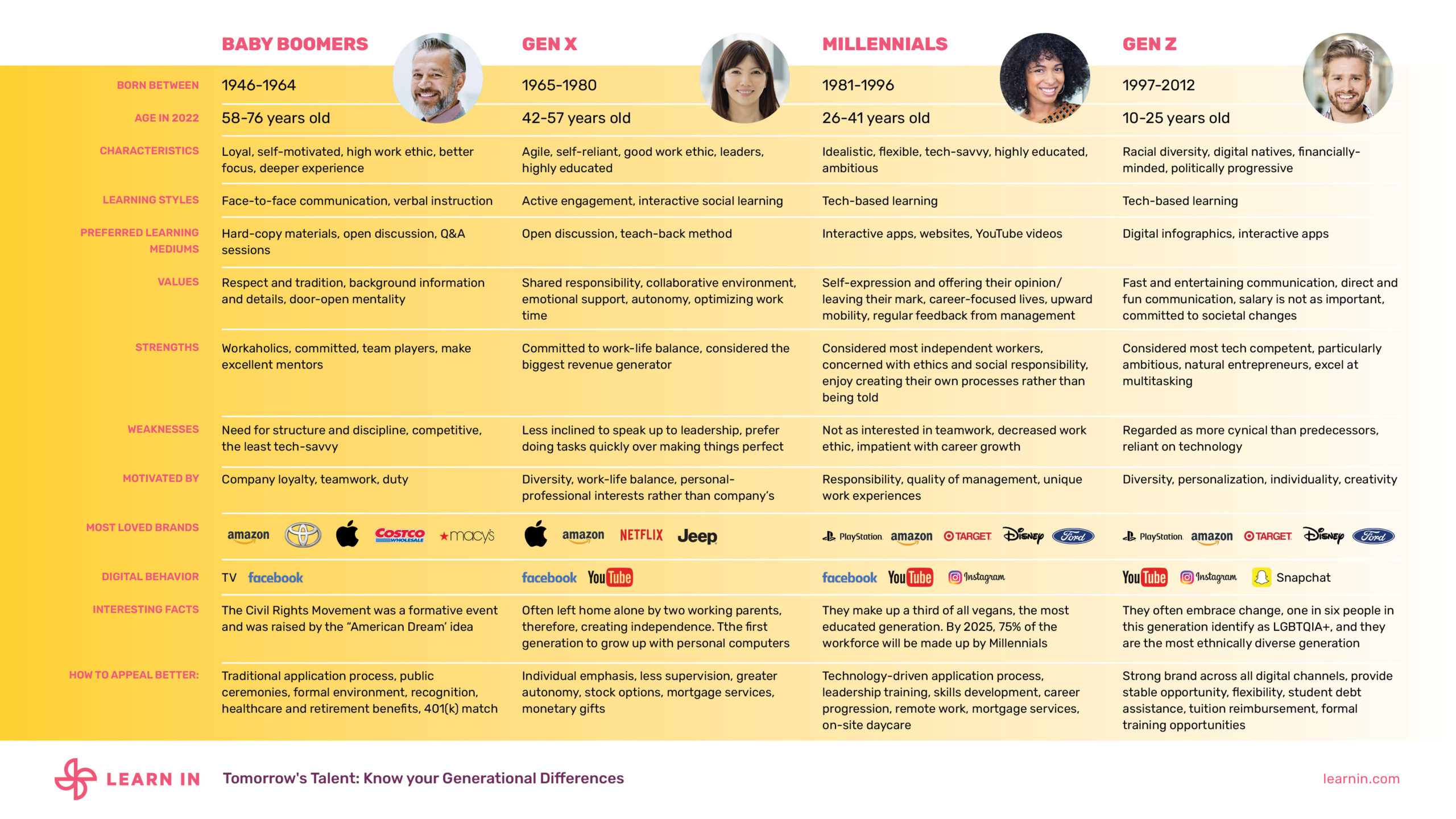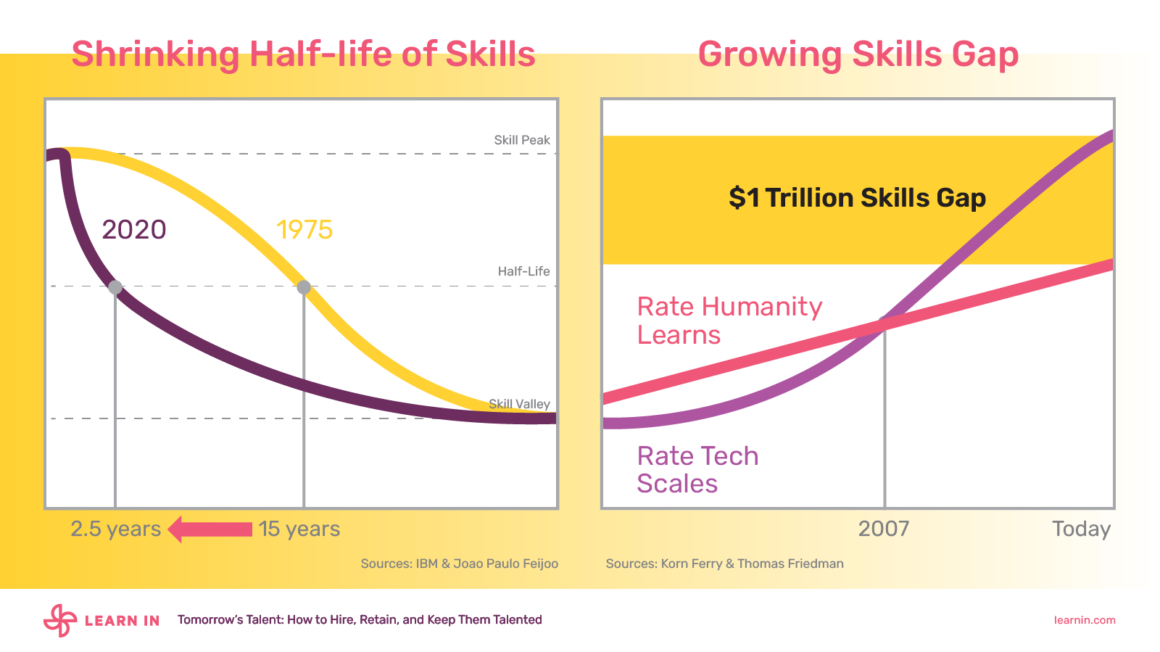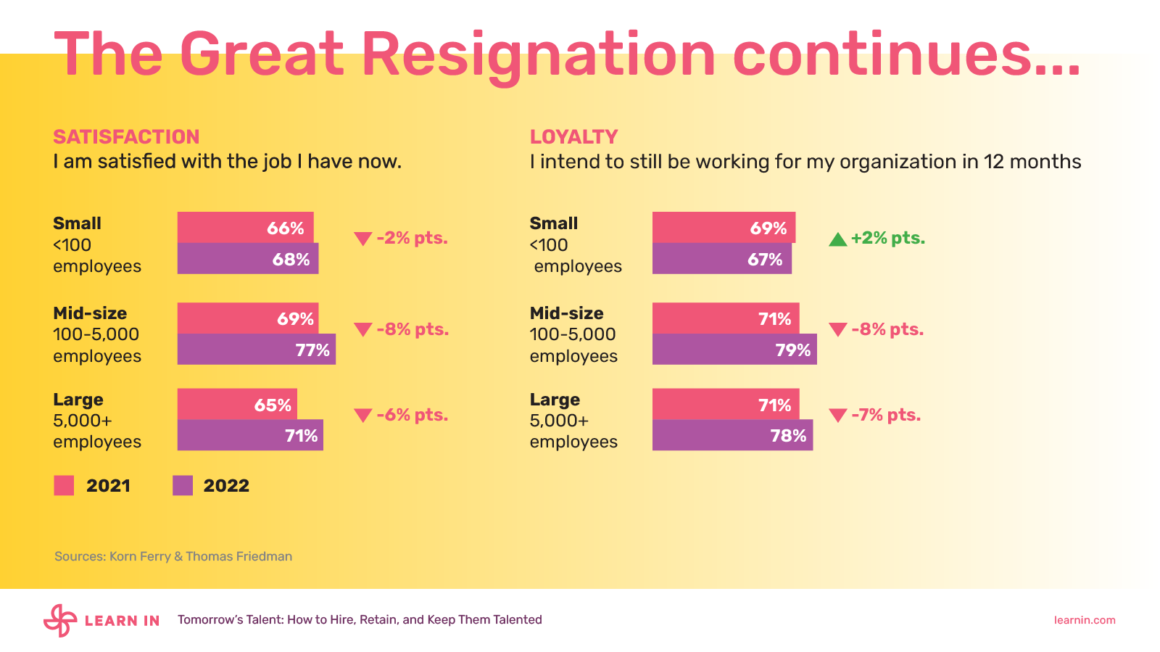The War For Talent: Why Growth Companies Need To Focus On Gen Z Workers
Once a friendly combat sport, hiring is now a flat-out brawl. Even if you haven’t felt many casualties yet, the current war for talent puts your growth company in a particularly vulnerable position. Why?
First, the fight for future talent is just heating up. (If you haven’t felt it yet—don’t worry, you will.)
Second, as Jeff Green and Christin McClave briefly explain in their Harvard Business Review article, “the middle market has a voracious appetite for talent because it grows faster, on average, than the rest of the economy.”
In other words, because your company has a uniquely oversized dependence on finding and keeping new talent, winning the war for talent is a necessity.

Today’s War For Talent
To go on the offensive, growing companies need to analyze and understand what caused today’s talent war:
- The change in workforce demographics
- The skills gap
- The Great Resignation
The Change In Workforce Demographics
It’s a simple case of demographics and math. By 2025 Gen Zs and millennials will make up 63.8% of the workforce, and by 2030 three out of every four workers (74.7%) will belong to these generations. Now, any dramatic shift in workforce demographics inevitably causes growing pains: companies must figure out how to lure and keep the new working generation.
Over the decades, companies figured out what appeals to baby boomers and Gen X workers. More recently, many companies cooked up a secret sauce to attract millennials. But Gen Z? Many companies are at a bit of a loss when it comes to Gen Z.
To complicate matters further, the pandemic shifted what some working generations want from their company. As a result, you’ll find analyses of workforce generations containing two sections: what millennials/Gen Zs wanted and valued before the pandemic and what they want and value now.
As you can see, it’s all very confusing. To give you a leg-up, we recommend using this primer—featured in our white paper Tomorrow’s Talent—which outlines the differences and similarities between each working generation.

The Unprecedented Skills Gap
Another cause of today’s talent war is the current and widening skills gap. We’re in the fourth industrial revolution, when technology scales faster than the rate humans can learn. Today, some skills only have a shelf-life of about 2.5 years before technology makes them obsolete.
Just think: only two and a half years after you hire a new employee, they’ll no longer have the skillset to complete the tasks for which your company hired them.
Again, as a growing organization that hires at a greater rate than small or enterprise companies, the skills gap poses a doubly tricky problem for your company. A mid-market survey found that “across all industries, almost every middle-market company (96%) report they are having some difficulty finding and hiring the right people with the right skills for open positions.” Many surveys out there illustrate similar statistics, which just underlines how high the hurdle of the skills gap is for midsize companies.

The Great Resignation
A new generation of workers and an unprecedented skills gap were hard enough to fix. Now millennial and Gen Z workers are revolting. Known as the Great Resignation, in 2021, 4.53 million workers quit their jobs. The trend continues into 2022 as Gen Z and millennial workers willingly quit their jobs to find something that fits their needs and values.
During this ongoing movement, midsize and enterprise organizations are experiencing the most casualties. For example, a 2022 MetLife report observes that while “loyalty and job satisfaction have fallen overall, employees at mid-size to larger companies and manual laborers are driving the decline.”
Growth companies must ask themselves why they’re vulnerable to younger generations quitting. Fundamentally, growing companies fail to fulfill the values and needs of Gen Z and millennial workers. This is a sizable problem considering Gen Z and millennial workers will make up 74.7% of the working population in 2030.

Why Growth Companies Need Gen Z Workers
There’s a skills gap, the Great Resignation, and a generational workforce shift. But after reviewing the complexities of the war for talent, you may have noticed that Gen Z contributes a lot to the problem. This is why growth companies should focus on Gen Z workers.
Combined, millennials and Gen Z are becoming the largest demographic in the workforce. But beyond just their size, growth companies are suffering significant casualties as these younger generations quit their jobs. Mid-market companies aren’t getting it right, and it will increasingly cost them the fight for tomorrow’s talent.
Winning the War For Talent
To get to know the battlefield, we provided a primer to learn more about Gen Z workers. To construct a comprehensive plan and win the war for talent, we recommend downloading this free resource: Tomorrow’s Talent: How To Hire, Retain, & Keep Them Talented.
This guidebook considers all the complexities of the current talent war. It proposes three big-picture strategies that address current marketplace trends and the unique values of Gen Z and millennial workers. By focusing on these three strategies—especially learning and development—you’ll strike at the heart of the Great Resignation, the skills gap, and changing midmarket work patterns.

